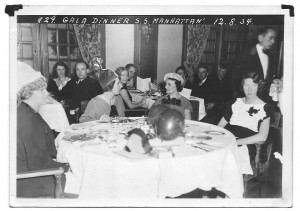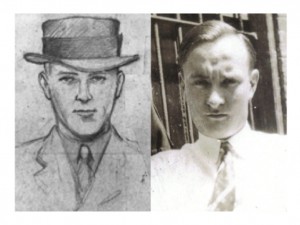Case Closed: “Crime of the Century”
The beer flowed freely as John Knoll chatted with his regular customers about events of the day. The post-Prohibition ‘Emerald Isle’ bar was a popular haunt with Irish-Catholics in the Yonkers neighbourhood of New York State and Knoll claimed to be one of them – an Irish emigrant, forced to leave behind his beloved homeland in search of a better life in the land of opportunity.
But history may have finally caught up with John Knoll, who was in fact Johannes Knoll, a German emigrant from the small town of Herxheimweyher in Rheinland Pfalz.
For the first time, a revealing new book from author, Robert Zorn (54) publicly names John Knoll as the callous mastermind and ringleader behind the 1932 “Crime of the Century” – the abduction and murder of the son of pioneering aviator and American hero, Charles A Lindbergh, the first man to fly non-stop from New York to Paris.
Zorn presents a well-structured, accessible and compelling narrative, re-telling the story of one of the most high profile kidnapping for ransom cases of the last century. He admits that he’s not an investigative journalist – his background is in the software industry and this is his first book – but he has managed to compile a well-researched catalogue of circumstantial evidence based on extensive research and expert opinion from criminal profilers and forensic psychologists, gathered over a period of three years in the US and Germany.
While Richard ‘Bruno’ Hauptmann was eventually convicted and executed for the crime in 1936, he went silently to the grave, never revealing his accomplices.
It’s hard to imagine a more shocking or daring crime. On the evening of March 1, 1932, 20-month-old Charlie Lindbergh was boldly snatched from his cot at the family estate in Hopewell, New Jersey. Two sets of footprints led away from the poorly-constructed ladder, which was awkwardly set against the exterior wall of the toddler’s second-story bedroom.
A series of ransom notes followed and a handover of $50,000 (€40,000) was arranged for the evening of April 2, at Woodlawn Cemetery in New York.
Zorn cites eyewitness testimony from John ‘Jafsie’ Condon, the intermediary appointed by Lindbergh to perform the handover, as the single most damning piece of evidence supporting his theory of Knoll’s involvement in the crime.
Condon gives a detailed description to police of his encounter with the kidnapper; a man with stocky build, a light complexion with an unusual fleshy abnormality at the base of his thumb. A German accent identified himself as ‘John’.
“The police sketch is a dead ringer for ‘Cemetery John’ Knoll and he has the lump or flesh mass at the base of his left thumb,” explains Zorn. “His family remember it. He has the same height and weight. That’s a pretty unusual array of physical characteristics.”
In fact, this fleshy mass is clearly visible in a 1936 photograph of Knoll as he carries his infant son.
But despite the ransom payment, little Charlie Lindbergh never made it back to Hopewell alive. His badly decomposed body was found by a passing trucker on May 12, face down in a section of isolated woodland just 7 km away from his home. The left leg had been gnawed off at the knee and the left arm at the elbow. The right forearm was also missing.

John Knoll and wife Lilly (back left), suspiciously leave for Germany on board ‘SS Manhattan’, right before Hauptmann’s trial in August 1934
The cause of death was recorded as “a fractured skull caused by external violence”, supporting the assumption that Charlie Lindbergh was dropped from a height by one of the kidnappers, probably Knoll, as he descended the rickety ladder found at the crime scene. The first two broken rungs lend strong credence to this theory.
“When you’re looking at proving something, there’s a difference between proving something that would convict someone in a court of law and proving something for historical standards,” Zorn admits. “But I have met with four former New Jersey prosecutors and all of them find the evidence extremely compelling. At the very least, Knoll would have been a suspect and they would have put him under surveillance,” he says.
Zorn’s father viewed Knoll as one of the luckiest criminals who ever lived, having managed to evade capture right until his untimely death.
But it was a strange twist of fate, which finally brought Knoll to meet his maker, by falling from a ladder, 44 years after death should have taken him at New Jersey State Prison.
‘Cemetery John’ – the Undiscovered Mastermind of the Lindbergh Kidnapping by Robert Zorn.
Overlook Press, 320 pages, $26.95
Available with free P&P on www.kennys.ie priced at €18.69


Leave a Reply
Want to join the discussion?Feel free to contribute!